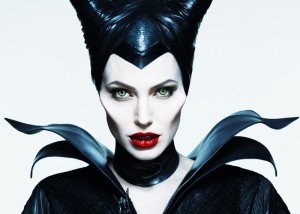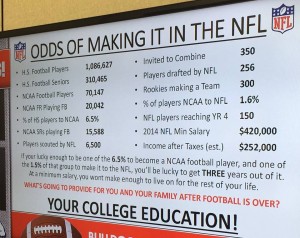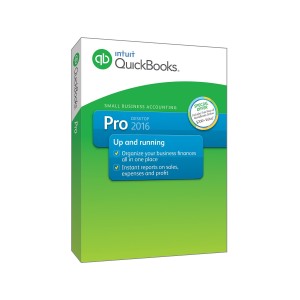
This is a guest post by Tasneem Mandviwala.
Although women have played various roles throughout the global history of war, including leader, organizer, and supporter, the most well-known role tends to be that of victim. This is perhaps justified due to the horrendous number of rape crimes and abuses of women that often happen within a war context. However, the question of why these crimes against women happen in the first place needs to be explored. While racial, ethnic, and cultural domination through the impregnation of the enemy is an immediate (though morally unacceptable) answer, an indirect answer of why women specifically are attacked might be discovered through the study of deeply ingrained cultural ideologies. In many cultures, the West included, women have been portrayed as weak, passive, and at the mercy of men’s whims in one of the most formative vehicles of cultural ideological transmission: fairy tales. Seemingly innocuous, fairy tales are in fact incredibly powerful modes of shaping societal mores, including gender roles and norms of aggression and violence. They gain power due to their liminal role as both fiction and fact. The fiction aspect is obvious enough, but fairy tales are also factual in the sense that they reflect the socio-cultural realities of the context they arise in. Fairy tales are cultural stories, but they have often served to cover up actual stories of women in contexts such as war due to their pervasive ability to stereotype gender roles.
Even though contemporary society is far removed in time from the conception of many of the stories we consider fairy tales today, these stories persist and teach members of society “the advantages of moral behavior” through “overt and covert meanings,” “carry[ing] important messages to the conscious, the preconscious, and the unconscious mind” (Bettelheim). “Moral behavior” in the context of war would imply good versus evil, right versus wrong; us versus them. However, although fairy tales—specifically Western fairy tales—are no stranger to violent scenes, the majority of the times the woman enacts the violence, she is dubbed “evil,” whereas when the man engages in violence, it is because he is “good.” Furthermore, the “good” female characters are only good because they are docile and waiting to be saved by the “good” man.
The artists behind mainstream films—specifically, Walt Disney’s films—have had a heavy hand in promoting traditional gender roles and shaping popular conceptions of fairy tales in the U.S. for about fifty years now. Even a cursory look at the animated 1959 Sleeping Beauty shows us that the moral categories of violence and gender are unquestionably clear cut and unambiguous. However, fifty-five years later, Disney has attempted to rebirth its own social monster and the results are promising. Maleficent (2014) is the re-telling of the story of Sleeping Beauty, but from the perspective of the “evil” violent woman, the fairy godmother. Over the course of the film, Maleficent moves from being a leader and warrior to a victim to an instigator and then full circle back to a warrior, albeit in a transformed way. Although this film is still adhering strongly to the idea of a fairy tale—in fact, Maleficent is literally a fairy in the movie—it reflects much more accurately than its 1959 ancestor the realities of women’s roles during wartime and is an encouraging step toward a truer cultural understanding of women and violence. Furthermore, it is not animated but acted, driving the point home even more that real women are involved in multiple and complex ways in war.
Before we can fully appreciate the socio-cultural shift in portrayal of women in war in Maleficent, we need to take a closer look at their portrayal in the now classic version of Sleeping Beauty made in 1959. Although there are more than these three characters, the ones I am concerned with are Princess Aurora, Prince Phillip, and of course, Maleficent. Aurora is portrayed as a perfect being, blessed with the gifts of beauty and happiness from the moment of her birth. These qualities are meant to define her entire life from its beginning and remove all agency and ability from her to develop into an actual individual for the presumably morally superior end of being “good.” Prince Phillip is arguably equally undeveloped, falling in love with Aurora through a chance encounter in the forest and then proceeding to journey to the castle where she sleeps to wake her from Maleficent’s curse with his kiss. This brings us to Maleficent. She is the character who propels all action in the story forward, from cursing Aurora upon her birth to turning into the dragon that Phillip must defeat before he can get to Aurora’s sleeping chambers. The catalyst for Maleficent’s upset at the beginning of the story is that she is not invited to Baby Aurora’s christening, but this is a weak case for the whirlwind of terror and destruction she causes; the proportion of cause to action does not hold. Rather, the stronger reason given for her aggression is the implicit one: she is “evil.” Just as Aurora is without question a “good” woman because she does not upset the system and behaves well, Maleficent is without question the “bad” because she challenges male authority, implements and abides by her own set of rules, and is both literally and metaphorically the character of action in the narrative. Her end at the hands of Phillip is also the end of the story.
While Aurora’s character stays largely the same in Maleficent, Maleficent’s and consequently Phillip’s roles undergo noticeable shifts from the first account of the fairy tale to the second. The ambiguity of telling the story from the traditionally villainized character’s point of view is appropriately adhered to throughout the 2014 film, with the previously cleanly divided lines of good/evil, male/female, and us/them smudged dramatically in the plot through the character development of Maleficent herself. The first adult identity Maleficent embraces is that of the warrior woman; specifically, the “protector of the Moors.” Because Maleficent grows up to have magnificent and strong wings—a clear symbolic element in the movie that is tied directly to her ability to be a leader—she is able to fly over and protect the land that is her home and the community she is a member of.
The choice of making her the protector of the “Moors” is not insignificant, as the term has a multivalent presence in a contemporary war context. First, Maleficent’s wings are her strength, but they are also what mark her for what she is: not human. The Moors are described in the film as a magical land bordering a human kingdom, but it is always the humans who attack first and demand the obedience of the creatures who live within the forested lands. It is against these aggressions that Maleficent protects and defends what is rightfully her own, a possible parallel to real world foreign “Others” protecting themselves against Western aggression. For much of our history, including the twentieth and (our current) twenty-first centuries, we as Westerners have often fought wars against ambiguous foreign enemies who come from lands we do not know or understand. Secondly, the literal meaning of a “moor” being an open, uncultivated tract of land also harkens back to notions of Western imperialism and Eurocentric ideas of bringing the right religion and culture to “uncivilized” and “savage” peoples through war and violence. Today, we might see this same mindset in the American idea of spreading democracy to all parts of the world regardless of previously entrenched cultural traditions. Thirdly, the divide between the Moors and the human kingdom set up in the movie is an actual geographic border, a spatial delineation of Us and Them not un-similar to what we find between Mexico and the U.S. today.
Finally, we cannot ignore the historical allusion the term “Moors” carries. The medieval Muslims who came to be known as the Moors to Europeans had a history of invasion and being invaded and of being viewed as the perpetually mysterious Other, despite being in high contact with numerous European cultures for hundreds of years. The European-Moor relationship is a telling one as it betrays the cultural war that was simultaneously occurring within the physical one. Because the Moors are laden with meanings such as these, the story of Sleeping Beauty itself shifts for the modern viewer. While in Sleeping Beauty the viewer was sure who was Us (the “good” humans Aurora and Phillip) and who was Them (the “evil” fairy Maleficent), in Maleficent, the [human] viewer immediately begins identifying with the Moor creatures rather than the humans, neutralizing the classically established bilateral dynamic.
Despite her strength as a fierce leader, though, Maleficent becomes a victim of war when Stefan, the future human king, symbolically rapes her of her wings. The king of the human world promises the crown to whoever can defeat Maleficent as he lives out his own last days due to a fatal wound she inflicted upon him during his attempted invasion of the Moors. Out of greed, Stefan takes advantage of the trusting relationship he and Maleficent had as children and teenagers—a relationship he himself had proclaimed to Maleficent to be “true love”—tricks her into drinking a sleeping potion, and severs her wings while she is unconscious; he becomes king shortly thereafter. In perhaps the most moving scene in the movie, Maleficent awakens to find her wings and identity stolen from her by the one human she had trusted most intimately. Having flown her whole life, she now not only must learn to navigate the world solely on foot but also to re-forge her identity as a wingless fairy who can no longer protect the Moors as she once did. While in earlier scenes in the movie Maleficent was arguably already being presented as “good” due to her protector role, the scenes involved violence on both the magical and human side. This scene of wing rape finalizes the repositioning of the classic “evil” Maleficent as an innocent victim and the classically “good” Stefan as an “evil” human. It is Maleficent who is shown in a deep sleep here, not Aurora (who has not been born yet), and it is Maleficent who shows the “good” values of trust and love.
However, after the initial shock of the betrayal wears off, Maleficent begins her healing by engaging once again in active participation in the war between the magical and the human, this time embracing the role of a vengeful instigator. As a tool of revenge against the newborn Aurora’s father Stefan, Maleficent curses Aurora: She will prick her finger on a spinning wheel’s spindle on her sixteenth birthday and fall into a deep sleep, only to be awoken by “true love’s kiss.” In this act, Maleficent reclaims Stefan’s words to her that led to her own wing-rape and suffering and repurposes them into her own weapon for fighting back. She is active in the magic-human war once again, albeit in a different manner.
The peak of vengeance was achieved in the moment of the curse, though, and the audience sees that Maleficent’s identity moves forward swiftly after this act into yet another stage: hero, or in a sense, a return to the warrior woman. Maleficent watches Aurora grow up and as her sixteenth birthday nears, the fairy godmother decides to let go of revenge, forgive, and reverse the curse upon the girl. Unfortunately, it is irreversible, but even this attempted act is telling of Maleficent’s complex character as both instigator and protector. Phillip becomes much less important in the saving of Aurora in 2014 than he was in 1959. In fact, he is present to kiss her only because Maleficent enchants his body into a passive state of slumber and actively takes him to the castle when her own attempt to undo the curse fails. As it turns out to everyone’s surprise, Phillip’s kiss is not one of true love; he becomes a marginal presence. It is Maleficent’s kiss to Aurora’s forehead, offered with apologies and regret, that awakens the girl and breaks the curse. This does not begin the dénouement of the film, however. King Stefan, rather than being overjoyed at his daughter’s renewed life is instead bent on revenge himself and once again initiates battle with a peaceful Maleficent. During this fight scene, Maleficent’s wings, which Stefan has saved over the years as his trophy, magically come back to life as they sense their owner’s presence and reattach themselves to Maleficent’s body. She is able to conquer Stefan and return safely to the Moors. These blatant role reversals that occur in two of the most defining scenes of the classic story—the kiss and the final battle—are a progressive step forward to more accurately conveying women’s active and complex roles in both the instigation but also the resolution of conflicts. Even the closing moments of Maleficent reflect this complexity, as Maleficent steps aside to allow Aurora to become the official leader of both the Moors and the human kingdom, creating a unified harmony. Additionally, we learn that Aurora was the one who was narrating the story from the beginning, a final moment of the female reclaiming her voice and her story.
Even though the dynamic character development of Maleficent is a positive change in the realm of popular culture depictions of fairy tales and the wars contained therein, the presence of the (symbolically) sexual victim stage still causes pause. The argument could be made that it was necessary to propel the plot forward, but there are deeper issues here that I believe the inclusion of the victim role point to. Although women today are far more active in militaries across the world than ever before, rape in a war context persists, and it is not always enemies attacking enemies. As recent research shows (e.g., the 2010 documentary film The Invisible War; Katie Rapp’s BuzzFeed interview with Alison Vingiano), sexual assault within the U.S. military is a pressing issue that women soldiers have to face, the trauma of which they have to deal with in addition to the stress of actual war. Maleficent’s violation by someone she thought she could trust is unfortunately not far from the idea of American soldiers being raped by American soldiers. Therefore, although women are increasingly present on the frontlines, the industry of war is still very much a male-dominated realm that complicates women’s roles in much the way Maleficent’s character is. To allow women to flourish and excel to their full abilities as fighters for whatever causes they believe in, socio-cultural norms that accept rape as a reality must be permanently altered. We are a long way away, but the portrayal of Maleficent as an empowered leader despite her victimhood is certainly a hopeful step.
Tasneem Mandviwala is a Ph.D. student at the University of Chicago’s Department of Comparative Human Development.















